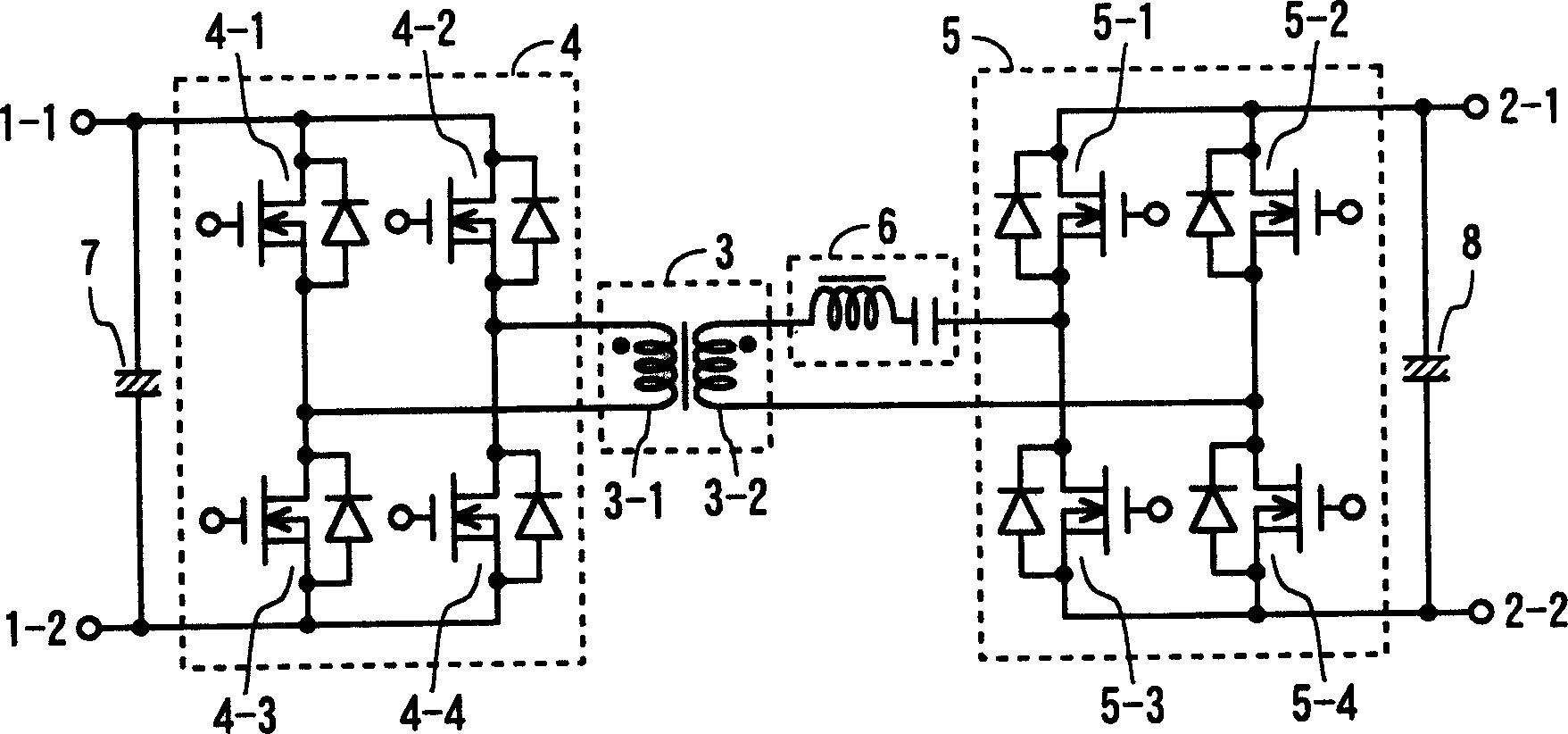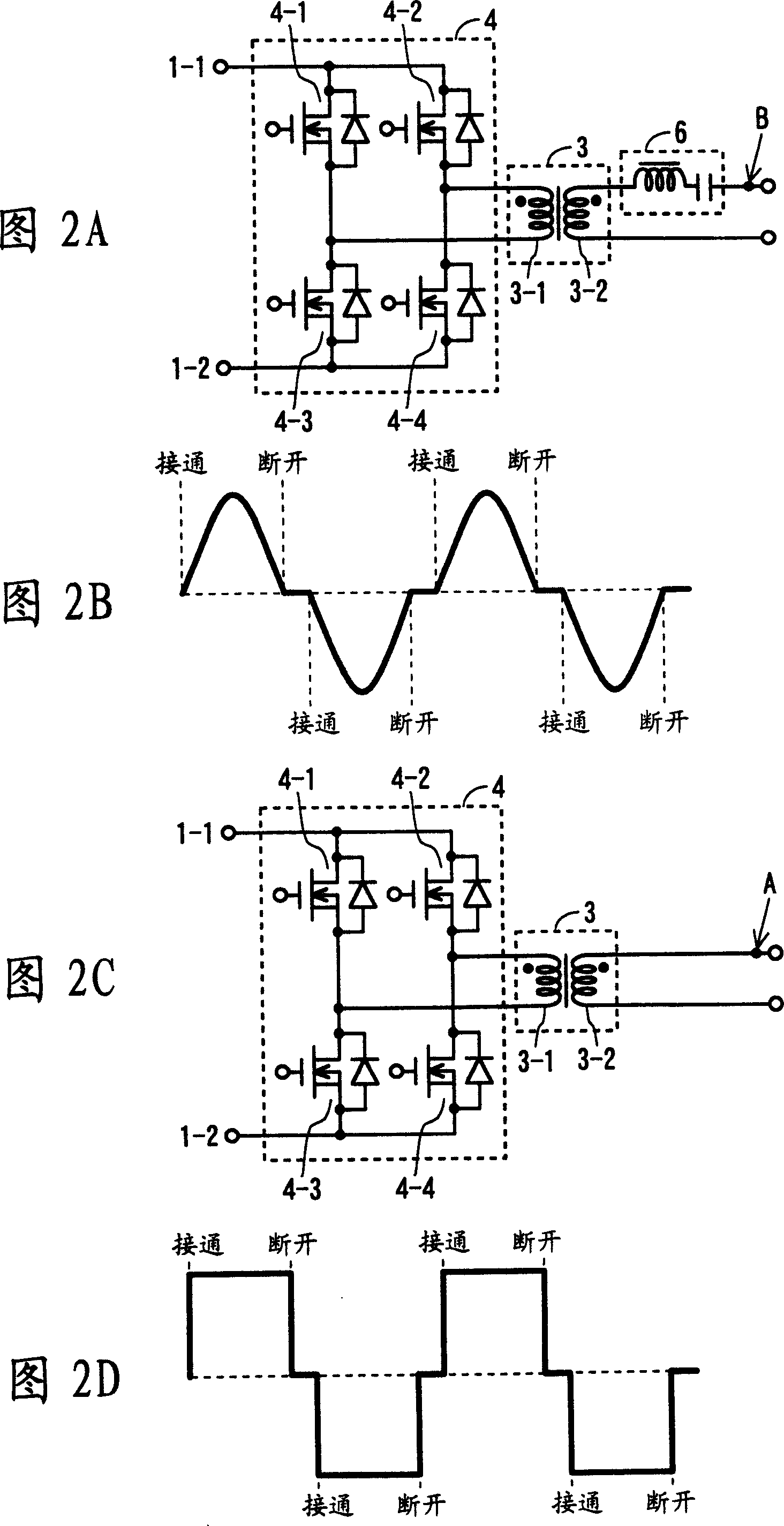Two-way DC-DC converter
A DC converter, bidirectional DC technology, applied in the direction of DC power input conversion to DC power output, high-efficiency power electronic conversion, output power conversion device, etc., can solve the problem that the circuit voltage loss cannot obtain sufficient performance, and large current flows into the switching element , Increased circuit scale and other issues, to achieve the effect of simplifying the structure, shortening the driving period, and suppressing switching loss
- Summary
- Abstract
- Description
- Claims
- Application Information
AI Technical Summary
Problems solved by technology
Method used
Image
Examples
Embodiment Construction
[0020] Hereinafter, the present invention will be described in detail with reference to the drawings. figure 1 It is a circuit diagram showing an embodiment of the bidirectional DC-DC converter of the present invention. In the bidirectional DC-DC converter of this embodiment, the DC power supply connected to the low-voltage side terminals 1-1 and 1-2 and the DC power supply connected to the high-voltage side terminals 2-1 and 2-2 are bidirectionally integrated through the transformer 3. . Hereinafter, the side of the low-voltage side terminals 1-1 and 1-2 may be referred to as the primary side, and the side of the high-voltage side terminals 2-1 and 2-2 may be referred to as the secondary side.
[0021] The transformer 3 includes a low-voltage winding 3-1 on the primary side and a high-voltage winding 3-2 on the secondary side. The step-up ratio of the bidirectional DC-DC converter is determined by the winding ratio of the low-voltage side winding 3-1 and the high-voltage si...
PUM
 Login to View More
Login to View More Abstract
Description
Claims
Application Information
 Login to View More
Login to View More - R&D
- Intellectual Property
- Life Sciences
- Materials
- Tech Scout
- Unparalleled Data Quality
- Higher Quality Content
- 60% Fewer Hallucinations
Browse by: Latest US Patents, China's latest patents, Technical Efficacy Thesaurus, Application Domain, Technology Topic, Popular Technical Reports.
© 2025 PatSnap. All rights reserved.Legal|Privacy policy|Modern Slavery Act Transparency Statement|Sitemap|About US| Contact US: help@patsnap.com



